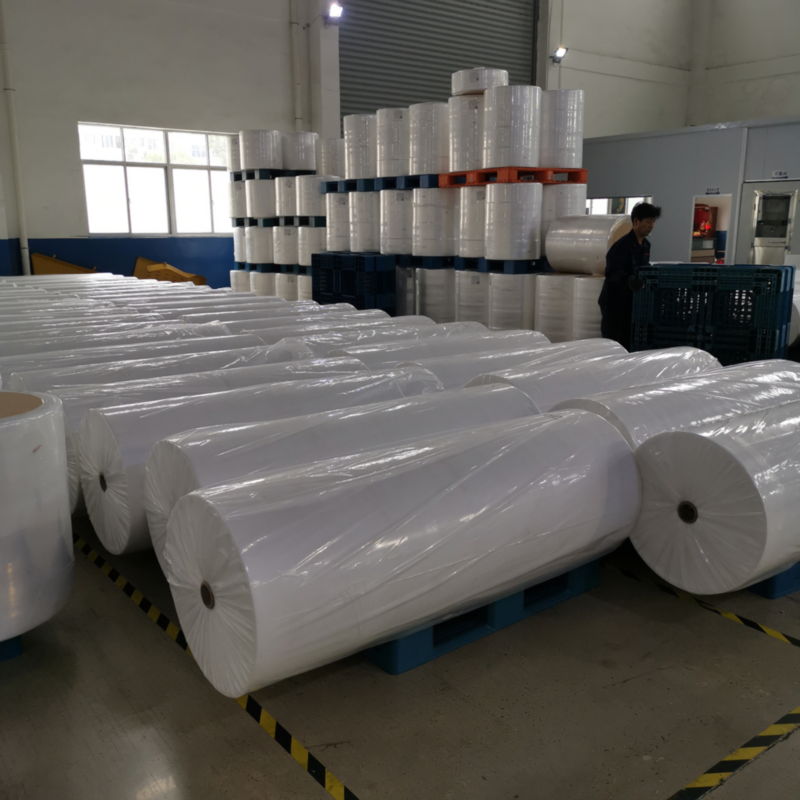Nonwoven fabrics have gained immense popularity in various industries due to their versatility, durability, and cost-effectiveness. Behind the scenes, nonwoven fabric lines play a crucial role in manufacturing these fabrics on a large scale. This article explores the significance of nonwoven fabric lines, highlighting their efficiency and versatility in meeting the diverse needs of different industries.
Understanding Nonwoven Fabric Lines
A nonwoven fabric line is a complex system of machinery and equipment designed to transform raw materials into finished nonwoven fabrics. The line typically consists of multiple stages, including fiber preparation, web formation, bonding, and finishing. Each stage involves specialized machines and processes that work together seamlessly to create high-quality nonwoven fabrics.

Efficiency of Nonwoven Fabric Lines
- High Production Capacity: Nonwoven fabric lines are designed for high-speed and continuous production. They can produce fabrics in large quantities, meeting the demands of various industries. The automated nature of these lines ensures efficient and consistent output.
- Customization Options: Nonwoven fabric lines offer flexibility in fabric customization. Manufacturers can adjust parameters such as fiber type, weight, thickness, and pattern to create fabrics with specific properties. This allows for customization to meet the diverse needs of different applications.
- Energy Efficiency: Modern nonwoven fabric lines are designed to optimize energy consumption. They incorporate energy-saving technologies and processes, reducing the environmental impact of fabric production.
Versatility of Nonwoven Fabric Lines
- Wide Range of Applications: Nonwoven fabric lines can produce fabrics for various industries, including healthcare, hygiene, agriculture, automotive, and construction. The versatility of these lines allows for the creation of fabrics with different characteristics, such as absorbency, strength, barrier properties, and filtration capabilities.
- Diverse Fabric Types: Nonwoven fabric lines can produce different types of nonwoven fabrics, including spunbond, meltblown, needle-punched, and spunlace fabrics. Each fabric type has unique properties and is suitable for specific applications. The ability to produce diverse fabric types adds to the versatility of these lines.
- Integration with Other Processes: Nonwoven fabric lines can be integrated with other processes, such as coating, laminating, and printing, to enhance the functionality and aesthetics of the fabrics. This integration allows for the creation of value-added products with additional features and benefits.
Application of Nonwoven Fabric Line
Nonwoven fabrics have a wide range of applications across various industries due to their unique characteristics and versatility. The nonwoven fabric line, facilitated by PP nonwoven machines, enables the production of these fabrics on a large scale. Here are some key applications of nonwoven fabrics:
- Hygiene Products: Nonwoven fabrics are extensively used in the manufacturing of hygiene products such as diapers, feminine hygiene products, and adult incontinence products. These fabrics provide excellent absorption, softness, and breathability, making them ideal for these applications.
- Medical and Healthcare: Nonwoven fabrics are crucial in the medical and healthcare industry. They are used in surgical gowns, masks, drapes, and sterilization wraps, providing barrier properties, infection control, and comfort to both patients and healthcare professionals.
- Geotextiles: Nonwoven geotextiles find applications in civil engineering and construction projects. They are used for erosion control, soil stabilization, drainage systems, road construction, and landscaping. Nonwoven geotextiles offer high tensile strength, filtration properties, and resistance to chemicals and UV degradation.
- Automotive Industry: Nonwoven fabrics are utilized in various automotive components, including interior trim, carpeting, headliners, seat covers, and insulation materials. These fabrics provide sound absorption, durability, thermal insulation, and aesthetic appeal to automotive interiors.
- Filtration: Nonwoven fabrics are widely used in air and liquid filtration applications. They can trap particles, dust, and contaminants, ensuring clean air and water. Nonwoven filters are employed in HVAC systems, face masks, water purification systems, and industrial processes.
- Packaging: Nonwoven fabrics are increasingly being used in packaging applications as an alternative to traditional materials like paper and plastic. They offer lightweight, tear-resistant, and customizable packaging solutions for various consumer goods.
- Agriculture: Nonwoven fabrics are used in agriculture for crop protection, weed control, and soil erosion prevention. They can be applied as agricultural covers, mulch mats, and nursery pots, providing a favorable environment for plant growth.
- Furniture and Bedding: Nonwoven fabrics are employed in furniture upholstery, mattress covers, and bedding products. They offer durability, comfort, and moisture-wicking properties, enhancing the overall quality of furniture and bedding.
- Personal Care Products: Nonwoven fabrics are found in a range of personal care products, including wet wipes, facial masks, cotton pads, and disposable towels. These fabrics provide softness, absorbency, and hygiene in daily personal care routines.
- Industrial Applications: Nonwoven fabrics find applications in various industrial sectors, such as insulation materials, protective clothing, cleaning wipes, and polishing pads. They offer thermal insulation, abrasion resistance, and efficient cleaning properties.
Nonwoven fabric lines play a vital role in meeting the growing demand for nonwoven fabrics across various industries. These lines offer efficiency, high production capacity, and customization options, allowing manufacturers to produce high-quality fabrics in large quantities. The versatility of nonwoven fabric lines enables the creation of fabrics with diverse properties and applications. As technology advances, nonwoven fabric lines continue to evolve, driving innovation and meeting the ever-changing needs of industries worldwide.
